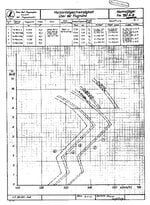33k in the air
Staff Sergeant
- 1,356
- Jan 31, 2021
A concentrated allied attack increases the effectiveness of the defences, as the raids become more predictable and even with day fighter escorts the bombers were taking significant losses historically, similar for the night bombers. In 1943 the allies lack the bomb lift and the accuracy to hit even the historical oil targets hard enough. The USAAF was a visual bomber force only until 27 September 1943 (H2S) and 3 November 1943 (H2X), and through lack of equipment and training still largely visual to end 1943, with a radar bombing accuracy comparable to the 1942 night bombers. Bomber Command was still mostly thinking in terms of marking a city, not a specific target in the city, as it would change over to in France in early 1944.
Varying the targets enough to not be too predictable is a challenge, certainly, but on the other hand, forcing the Luftwaffe to come up and defend the Ruhr is getting the fight for air superiority to happen sooner than it did historically, if proper fighter support can be mustered. That Bomber's Command campaign against the Ruhr in the first half of 1943 was having a deleterious effect on German war production is clear.
If most oil targets are not yet in range, many transportation targets are. The German electrical supply was not hit in any substantive way historically, so pushing those up the list would pay some dividends.

